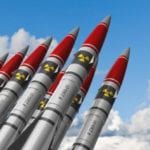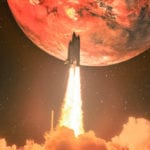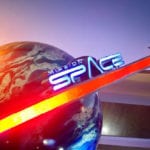 Weird Stuff
Weird Stuff  Weird Stuff
Weird Stuff  Mysteries
Mysteries 10 Tragic Disappearances and Deaths in Joshua Tree National Park
 History
History 10 Ways Childhood Really Sucked in the Old West
 Music
Music 10 Name Origins of Famous Bands from the 1990s
 Religion
Religion 10 Biggest Turnarounds by the Catholic Church
 Weird Stuff
Weird Stuff 10 Unbelievable Times Laws Had Unintended Consequences
 Humans
Humans Ten Historic Women Who Deserve Way More Credit Than They Got
 Movies and TV
Movies and TV 10 Films That Spawned Major Lawsuits
 History
History Ten Times Towns Were Wiped Off the Face of the Earth
 Creepy
Creepy 10 of the Most Disturbingly Haunted Public Houses in the UK
 Weird Stuff
Weird Stuff 10 Niche Subcultures That Are More Popular Than You Might Think
 Mysteries
Mysteries 10 Tragic Disappearances and Deaths in Joshua Tree National Park
 History
History 10 Ways Childhood Really Sucked in the Old West
Who's Behind Listverse?

Jamie Frater
Head Editor
Jamie founded Listverse due to an insatiable desire to share fascinating, obscure, and bizarre facts. He has been a guest speaker on numerous national radio and television stations and is a five time published author.
More About Us Music
Music 10 Name Origins of Famous Bands from the 1990s
 Religion
Religion 10 Biggest Turnarounds by the Catholic Church
 Weird Stuff
Weird Stuff 10 Unbelievable Times Laws Had Unintended Consequences
 Humans
Humans Ten Historic Women Who Deserve Way More Credit Than They Got
 Movies and TV
Movies and TV 10 Films That Spawned Major Lawsuits
 History
History Ten Times Towns Were Wiped Off the Face of the Earth
 Creepy
Creepy 10 of the Most Disturbingly Haunted Public Houses in the UK
Top 10 Near-Death Experiences In Space
Throughout history, several astronaut and cosmonaut fatalities have occurred in space-related accidents. We have all heard about the Challenger and Columbia disasters that unfortunately caused many of these fatalities. However, many more incidents did not result in such horrific deaths and, therefore, have not gained much media coverage. Here are a few of these near-death experiences in space.
10 Liberty Bell 7
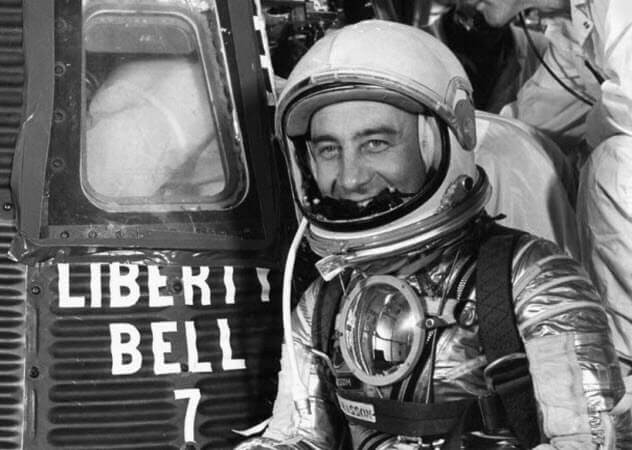
Also named Mercury-Redstone 4, this space mission successfully sent the second American man into space. The launch occurred on July 21, 1961, after days of delay due to unfavorable weather conditions. The main goal was to have one man accomplish an orbit in space and study his reactions. The lucky man chosen to participate in such a feat was Virgil I. Grissom (nicknamed “Gus”).
The trip only lasted a little over 15 minutes, but NASA deemed it a complete success. Many would disagree, however, because of the rocky landing and Gus’s near-death experience.[1]
Everything was going “swimmingly” for the mission until splashdown. The hatch cover, which would be activated explosively in the event of an emergency, was accidentally activated. This led to Grissom nearly drowning in Cape Canaveral, Florida.
He escaped the craft immediately to avoid such a fate, which ultimately saved his life. To make matters worse, the first helicopter that was sent to retrieve the spacecraft failed and Grissom remained in the water for nearly five minutes while awaiting rescue.
9 Voskhod 2
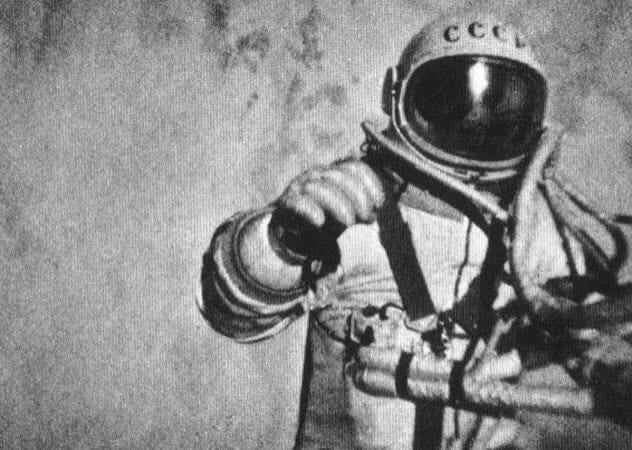
On March 18, 1965, Voskhod 2 was launched from Baikonur Cosmodrome in the Soviet Union. The goal was to prove that men could survive in space with the appropriate suit. The two pilot cosmonauts on the mission were Pavel I. Belyayev and Aleksey A. Leonov (some spell his name as “Alexei”).
Leonov was chosen to perform the first ever ExtraVehicular Activity (EVA), which is basically a space walk. Such a feat would be momentous for the science community and would awe curious audiences everywhere. It would also annoy the United States during the Space Race.
The two men prepared for the dangerous mission. Leonov stepped into the air lock as Belyayev lowered the air pressure. Leonov made his way out into the void of space, which was immediately broadcast across the world to show the Soviet success. The entire walk lasted 10 minutes, after which Leonov unenthusiastically returned to the air lock.[2]
However, the unique absence of atmosphere in space caused Leonov’s suit to fill with air, making it nearly impossible for him to move. With only 40 minutes of oxygen left, he needed to rush for a solution before suffocating.
He discovered the solution by releasing small amounts of oxygen into space to deflate his suit. He did so until he could comfortably fit into the tight air lock, nearly overheating in the process.
Leonov was lucky to escape such a horrific death in just under three minutes, but even more trouble awaited the Voskhod 2 mission. After a fire hazard caused by an increase of oxygen inside the cabin came the discovery of the autopilot being broken.
The men had to manually land themselves in the Siberian wilderness, where they spent two nights away from civilization. On the second day, they were rescued by skiers, with whom they spent the second night in celebration.
8 Gemini 8
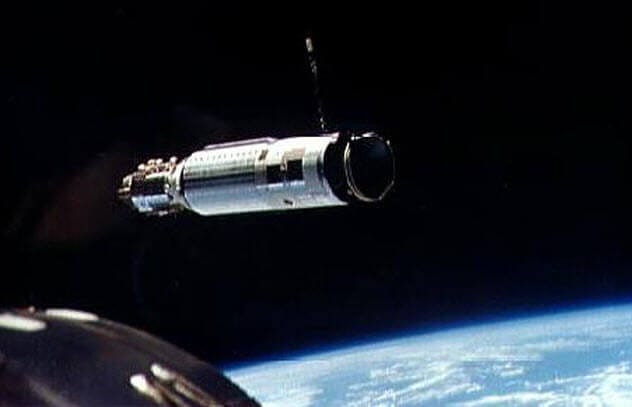
This mission, which launched on March 16, 1966, was a United States attempt to perform an EVA and rendezvous with the Gemini Agena Target Vehicle (GATV). The two astronauts on the mission were David Scott and the famous Neil Armstrong.
As usual, everything was normal, but then the two craft began to spin and roll uncontrollably. This is when the mission began to take a dangerous and deadly turn.
In an attempt to regain control of the craft, Armstrong disconnected from the GATV. This only made matters worse and strengthened the spinning and rolling. The two pilots deactivated the Orbit Attitude and Maneuver System (OAMS), and then all the reentry control system (RCS) thrusters were activated to soften the tumbling.[3]
This last resort worked, but it only left the RCS with 25 percent of the fuel originally stocked. It was then discovered that the one of the OAMS had accidentally been in continuous use, causing it to short-circuit, which was found to be the source of the rolling. The mission had to be cut short, and the space walk was never performed.
7 Soyuz 5
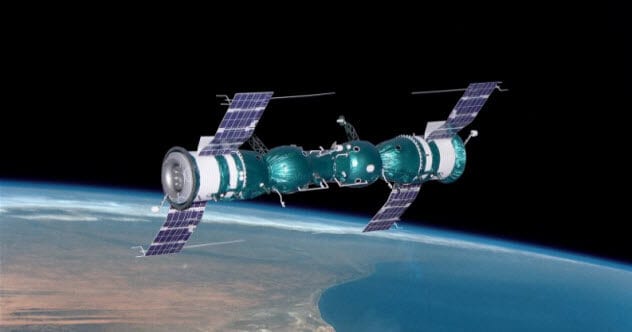
The main mission of Soyuz 5 was to successfully dock with the Soyuz 4 in space. The mission went without any complications and was scheduled to return to Earth on January 18, 1969. As the Soyuz 5 attempted to disengage from the Soyuz 4, the service and reentry modules failed to separate from each other, which caused the danger that lay ahead for Boris Volynov, the only cosmonaut aboard.
The failed separation caused the craft to reenter the atmosphere nose-first, making it extremely aerodynamic. The accelerated speed caused a major indention on the nose of the hatch and melted the seal, which sent smoke into the cabin.
The smoke made the craft very difficult to pilot. Hope came when the service and reentry modules finally separated, which fixed the direction the craft was facing. However, it was still traveling at an alarming speed.[4]
The parachute deployed correctly, but then the soft-landing rockets malfunctioned. This made the landing extremely harsh, causing Volynov to jolt forward in his harness and break several teeth. He exited the craft safely but had to walk through the snowy weather and tremendously cold temperature of -40 degrees Celsius (-40 °F) to get to Kustani, Russia, where he was finally rescued.
6 Apollo 12

The Apollo 12 mission was set to launch on November 14, 1969, shortly after the famous Apollo 11 mission that put the first man on the Moon. Now, the Apollo 12 mission would attempt to recreate the Moon landing, along with other mission objectives. The crew consisted of three astronauts: Dick Gordon, Pete Conrad, and Alan Bean. However, the mission almost ended in a deadly way shortly after it began.
The launch went as expected until the crew was about 2,000 meters (6,500 ft) into the air. At precisely 36 seconds into the mission, lightning struck the craft. The alarm system immediately turned on, and astronaut Bean stated that it was “more lights than [he] had ever seen ever in the simulator.”
Things took a turn for the worse when another lightning strike hit the craft 16 seconds later. This time, all the systems crashed and the command module shorted out of power. The battery backups could only last a few hours.[5]
After moments of increasing panic, environmental control engineer John Aaron offered the solution: Switch the craft from SCE to AUX, which would put the craft into auxiliary mode. When the crew followed directions, power was restored and the mission was carried on as intended.
The little-known switch saved the mission and the crew members’ lives, but it was a close call.
5 Apollo-Soyuz Test Project
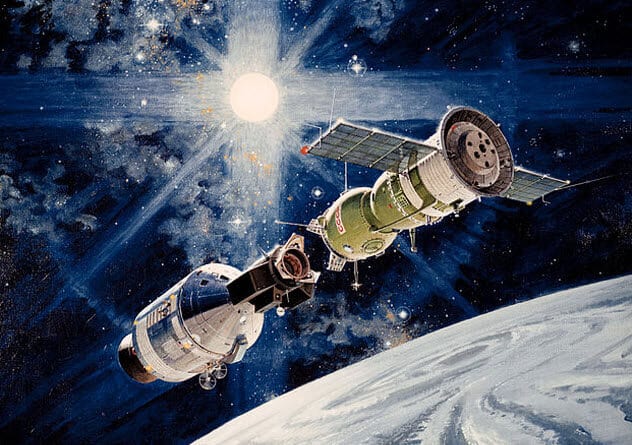
The Apollo-Soyuz Test Project was a momentous mission in the history of space exploration. It was the first space collaboration between two countries, the United States and the Soviet Union.
The mission date was July 15, 1975, just after completion of the Space Race. The three American astronauts were Thomas Stafford, Vance Brand, and Donald Slayton. It was a very successful mission, despite the deadly incident experienced by the Americans during reentry into Earth’s atmosphere.
The automatic landing mechanism failed the Americans, and the crew had to switch to manual for the parachutes to deploy in time. This caused the craft to shake but was corrected when the automatic system was restored 30 seconds later.
However, the pressure relief valve had automatically opened, letting in gases from outside the craft. Along with oxygen, the crew was exposed to toxic gases. They were nearly unconscious by splashdown, and Brand actually did become unconscious for a brief period.
Stafford had to put an oxygen mask on Brand for him to regain consciousness. The whole ordeal left the crew in a Honolulu hospital for two weeks, but they were lucky not to have experienced more extreme health problems after such a close brush with death.[6]
4 Soyuz T-10-1
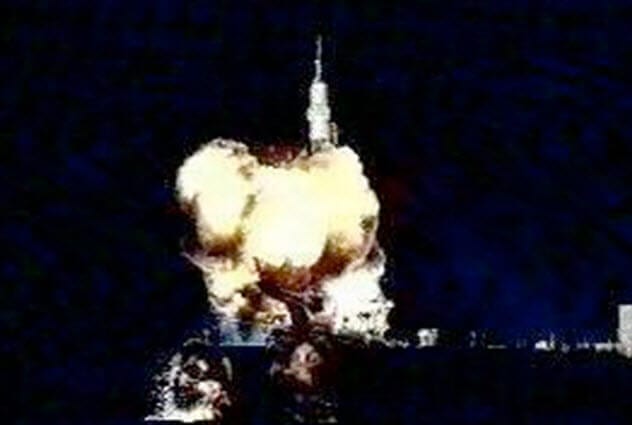
The Soyuz T-10-1 was a very unsuccessful Soviet space mission. The goal was to change the Salyut 7 (the Soviet Union’s space station) solar arrays. The mission could not be completed with the current crew because of the horrific disaster that occurred right before the launch was scheduled.
Just a minute before the launch, a huge fire engulfed the booster of the Soyuz craft. The crew was lucky to be experienced enough to tell when something was wrong. They both buckled their harnesses in preparation for the launch, which they assumed would be extremely dangerous.[7]
The escape tower accelerated at an alarming speed but took the capsule to a safe distance from the fiery pad. This abort system saved the lives of the two cosmonauts aboard. Luckily, neither of them was harmed during this flaming ordeal, which potentially could have resulted in both of their deaths.
3 Mir
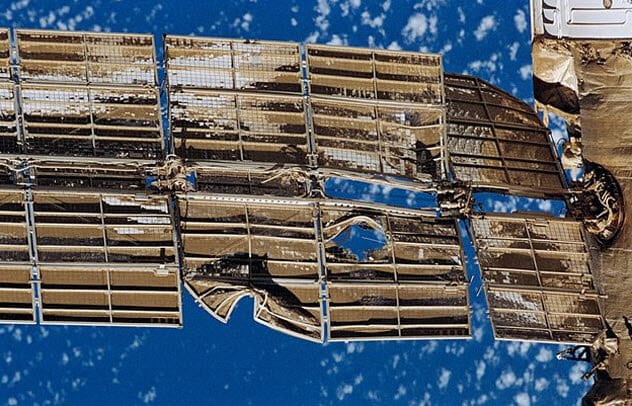
The Mir space station has experienced several mishaps throughout the years, but two incidents in 1997 set it apart. The first was a fire aboard the station that occurred on February 23. The station was performing a routine that involves igniting an oxygen-creating canister, but the fire suddenly went out of control.
The Russian crew had to use gas masks while extinguishing the fire, and their Soyuz spacecraft was filled with smoke. The smoke later cleared, and the crew did not experience any threatening health problems.[8]
The second incident was the worst space collision the Earth had ever witnessed. The collision occurred on June 25, just a few short months after the fire incident. A crew member was performing a docking test with a remote control when he suddenly lost control of a cargo ship. The ship collided with the station and left a dangerous air leakage.
Luckily, the crew heard the hissing before a major loss and located the sound in the Spektr module. They resolved the issue by cutting the cables that led to the Spektr and sealed the hatches. The crew’s quick response to both issues ensured their safety and is the reason they did not experience any significant harm.
2 STS-98
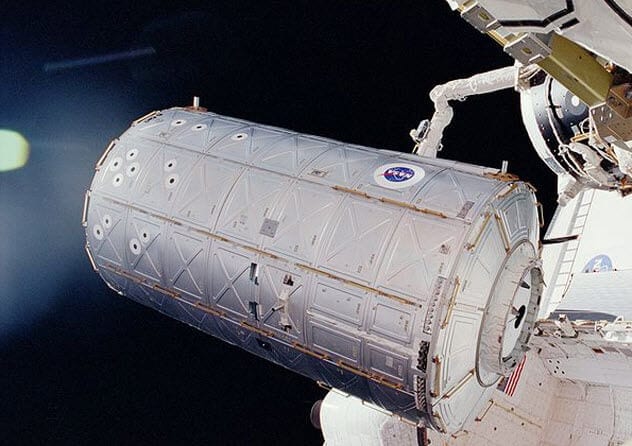
The STS-98 mission launched on February 7, 2001. The five-person crew included Ken Cockrell, Mark Polansky, Robert Curbeam, Thomas Jones, and Marsha Ivins. Three space walks occurred during the mission, the first of which nearly ended in disaster.
The first space walk lasted a little over 7.5 hours. Jones and Curbeam connected data and electrical cables as well as cooling lines. An accident occurred while Curbeam was connecting the cooling lines and allowed a small amount of ammonia crystals to leak.
Fortunately, the leak was stopped very quickly, but some of the toxic ammonia crystals attached to Curbeam. He had to stay in the Sun for an extra 34 minutes to evaporate the crystals as a precautionary measure.[9]
Jones decontaminated the equipment and the suit. Slight pressurization was performed in the air lock to ensure that the ammonia could not penetrate the cabin. If the crew were exposed to such toxic chemicals, the mission would not have been viewed as such a success.
1 ISS Expedition 36
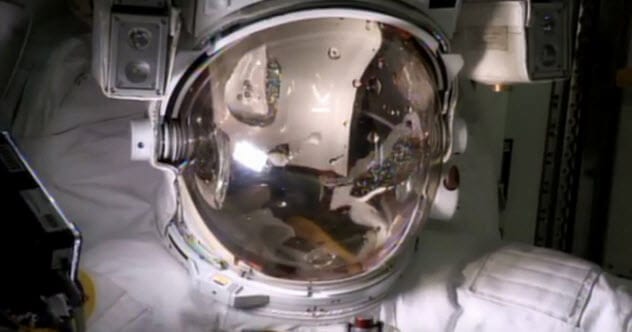
The disastrous event of Expedition 36 occurred on the International Space Station on July 9, 2013. It is the most recent space-related accident as of mid-2017. The 22nd spacewalk had just been performed during this mission when American astronaut Luca Parmitano discovered that his helmet was filling with water.
There was 0.5–1.0 liter (17–34 oz) of liquid in his helmet, nearly up to his mouth. His crewmates determined that the origin of the leak was Parmitano’s drink bag, which likely leaked while he leaned forward in the air lock.
During the next EVA a week later, Parmitano’s helmet began filling with water again. He continued the space walk until there was over 1 liter (34 oz) of water, making it nearly impossible for him to see and breathe. The walk had to be aborted, so Parmitano and his crewmate returned to the craft.[10]
It was later determined that the leakage was not from his drink bag but from a “contamination and blockage” inside his suit. Parmitano nearly drowned in space. Due to this unfortunate event, new measures have been established to ensure that this type of accident never occurs again.
Hunter is a new college student who has a fondness for writing. He hopes his readers enjoy reading his work just as much as he does writing it.
Read more about the strange space experiences of our astronauts and cosmonauts on 10 Mysterious Incidents From The International Space Station and 10 Astronaut Health Risks That Threaten Deep Space Missions.

